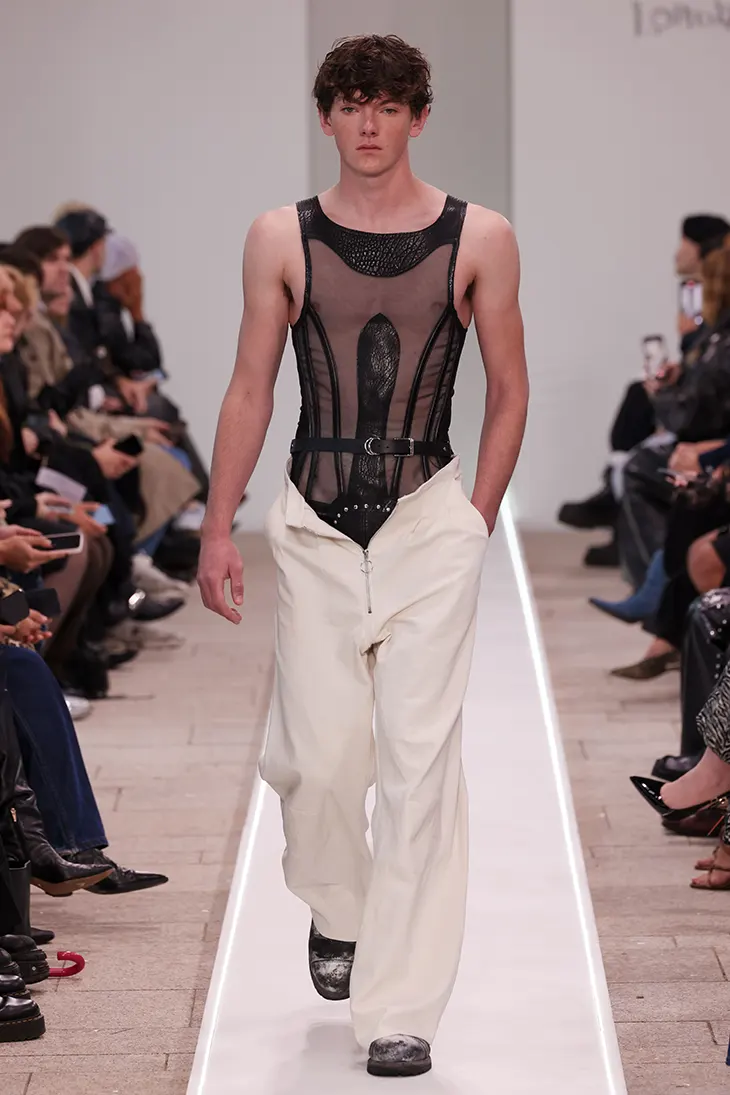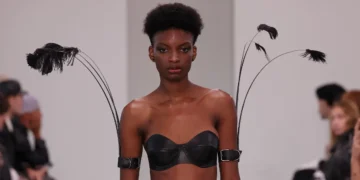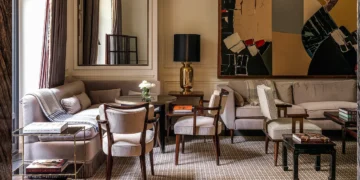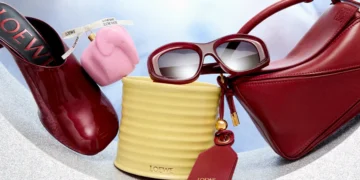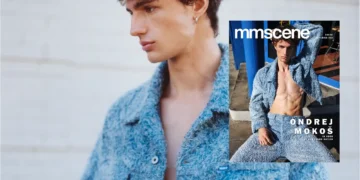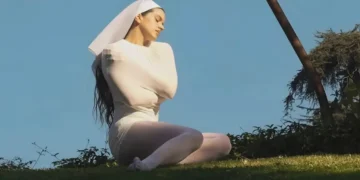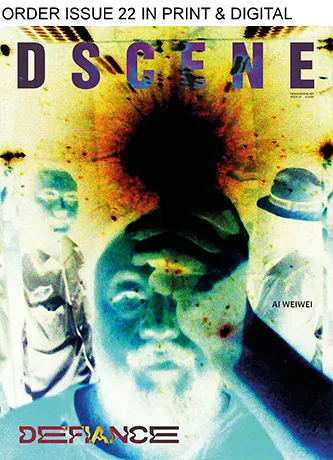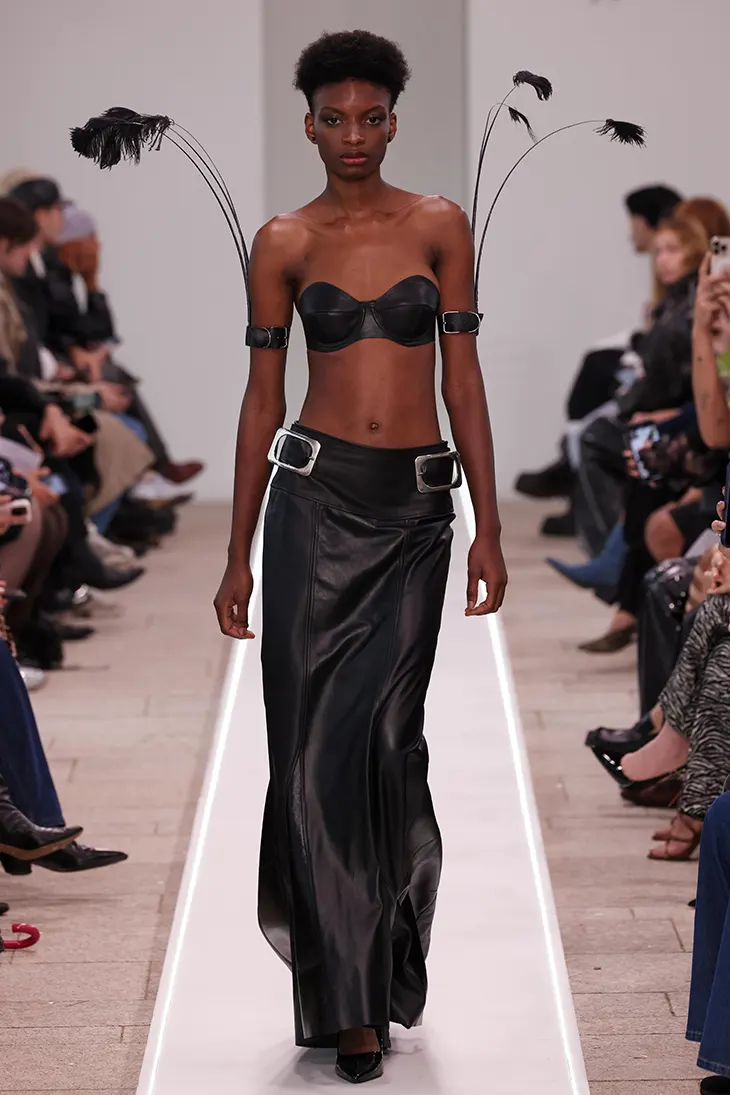
Lorenzo Seghezzi presented Spring Summer 2026 collection, Interlude, during Milan Fashion Week as part of the Lineapelle Designers Edition schedule. The collection drew directly from his experiences in Milan’s clubbing scene, where nightlife became both a site of expression and resistance. Underwear, vests, and petticoats once confined to private spaces appeared as outerwear, transformed into symbols of empowerment. Traditional Indian garments like kurtas and bandhgalas were reshaped, their silhouettes twisted into new forms. Corsetry, drag-inspired performance, and handcrafted construction defined the collection, while leather entered his practice for the first time through a partnership with Lineapelle. Salvaged and archived materials, combined with steel hardware, grounded each piece in Seghezzi’s vision of fashion as both ecstasy and confrontation.
INTERVIEWS
In conversation with DSCENE Magazine Editor-in-Chief Zarko Davinic, Seghezzi reflects on the emotions and memories that shaped Interlude. He recalls the influence of clubs that became homes, schools, and laboratories, and explains how experimentation, performance, and chosen family guided the process. He also discusses the challenges of working with leather for the first time, the role of sustainability in his practice, and his hopes for queer adulthood outside the night.
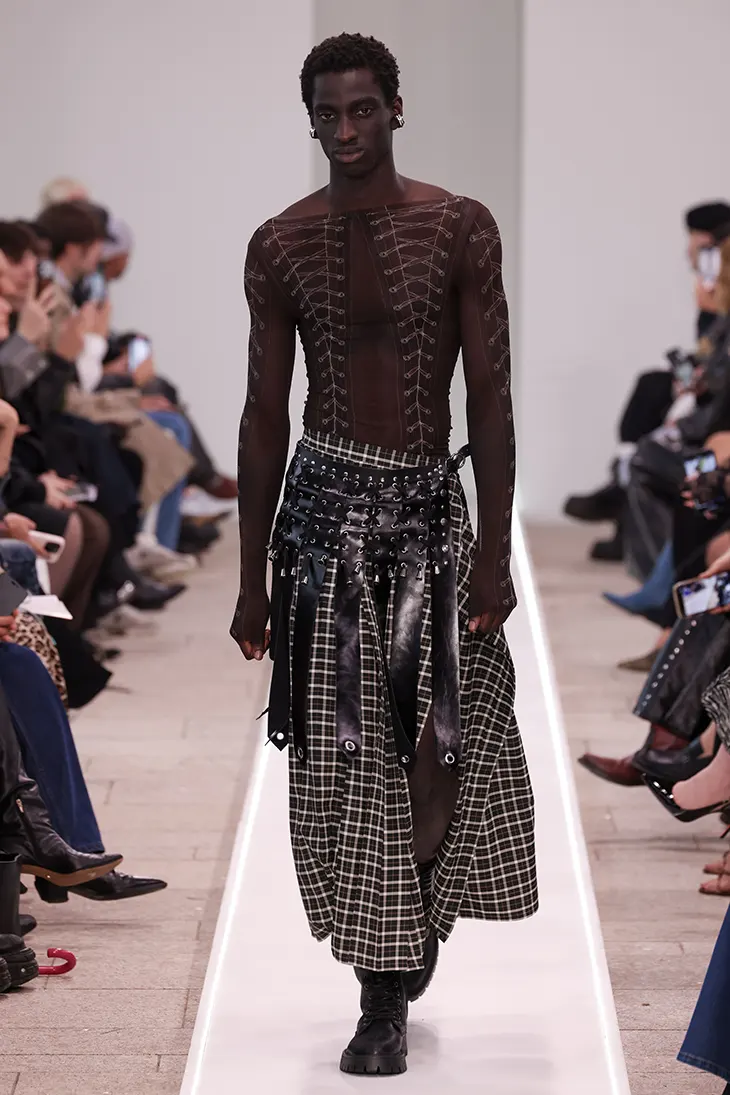
“Interlude” draws deeply from your personal experiences within Milan’s clubbing scene. How did those nights shape the emotional and visual language of this collection?
I’m always very involved, both emotionally and physically, when it comes to my designs. When you do everything by hand yourself, there’s no way you can really detach from the garment. They become a part of you that only at the end you can part with. In this collection I let emotions and memories guide me. I thought about my chosen family, my partner, my past friendships and experiences, and used them as fuel. It was a very organic process—I didn’t even draw the entire collection before starting to put all the pieces together.
“Nothing makes me happier than sharing this experience with the people I love.”
Iconic clubs like Toilet, Plastic, and La Boum have played a pivotal role in your journey. What specific memories or lessons from those spaces are woven into the garments for SS26?
Lots of fun memories! I remember the first time I walked into Toilet Club when I was 19. I didn’t know anyone, yet I felt at home. And guess what? Almost 10 years later it feels like home more than ever. The best memories I have from my early 20s were in clubs. Clubs were home, school, and work all mixed together.
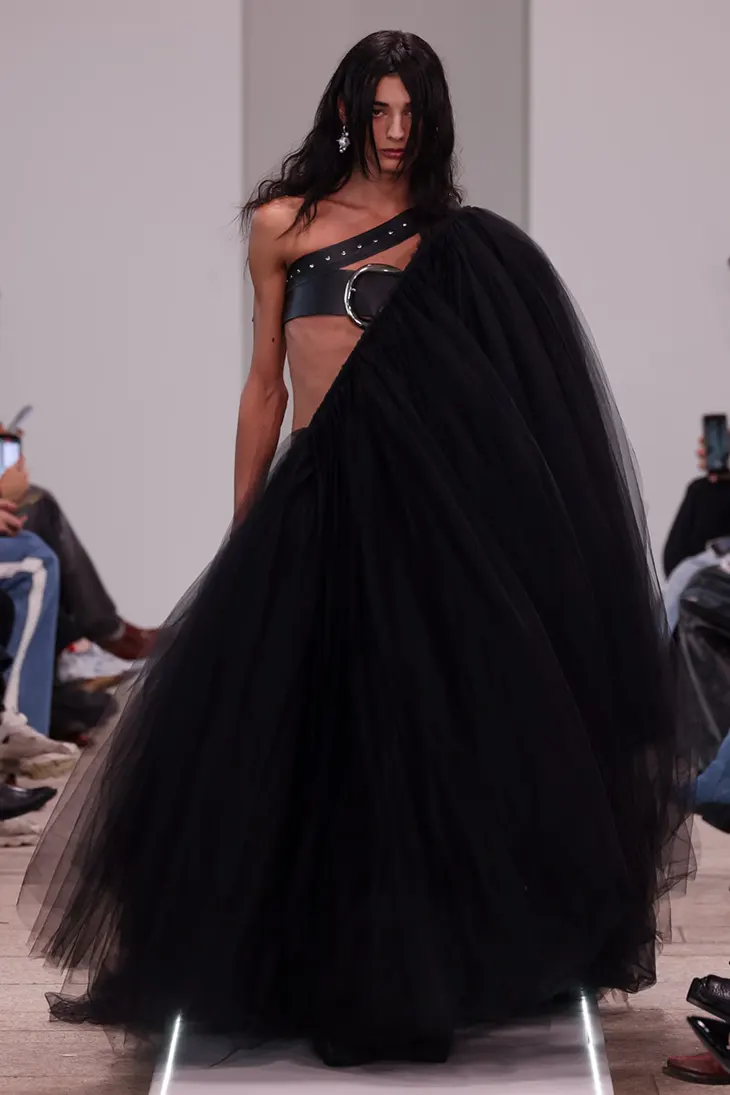
You describe clubbing as a rite of passage and a nocturnal laboratory for transformation. How do you translate that sense of experimentation and resistance into your design process?
Through clubs, drag, and performance I’ve learned how to put together a look, first for myself, then for others. I’ve learned how to deal with a client, how to experiment with crazy shapes and materials, how to put together something iconic with literally no budget. Now I still use the same rules: a sense of experimentation, the ambition of doing something crazy. But hopefully with more polished results!
“I’m always very involved, both emotionally and physically, when it comes to my designs.”
Corsetry is a recurring signature in your work, rooted in your encounters with drag and burlesque. How does this collection push the boundaries of gender expression and performance?
I think you can’t really talk about some topics if you don’t involve those specific people in your work. Having queer icons on the runway was a crucial point for me, and I’m really proud to say that not only are they Milanese icons, but they’re also my family, people I literally grew up with. Nothing makes me happier than sharing this experience with the people I love. Not only on the runway but also backstage. Having Daria Persia as a stylist was crucial, not only because her sense of style really challenged me to go outside my comfort zone, but mostly because we grew up together. We spent those nights in the club and then went back to fashion school the day after. And it’s the same with the models: Croce, Simon, Watashi, Kay, Marika, Raffa, Angel, Nady. This project wouldn’t have made sense without them.
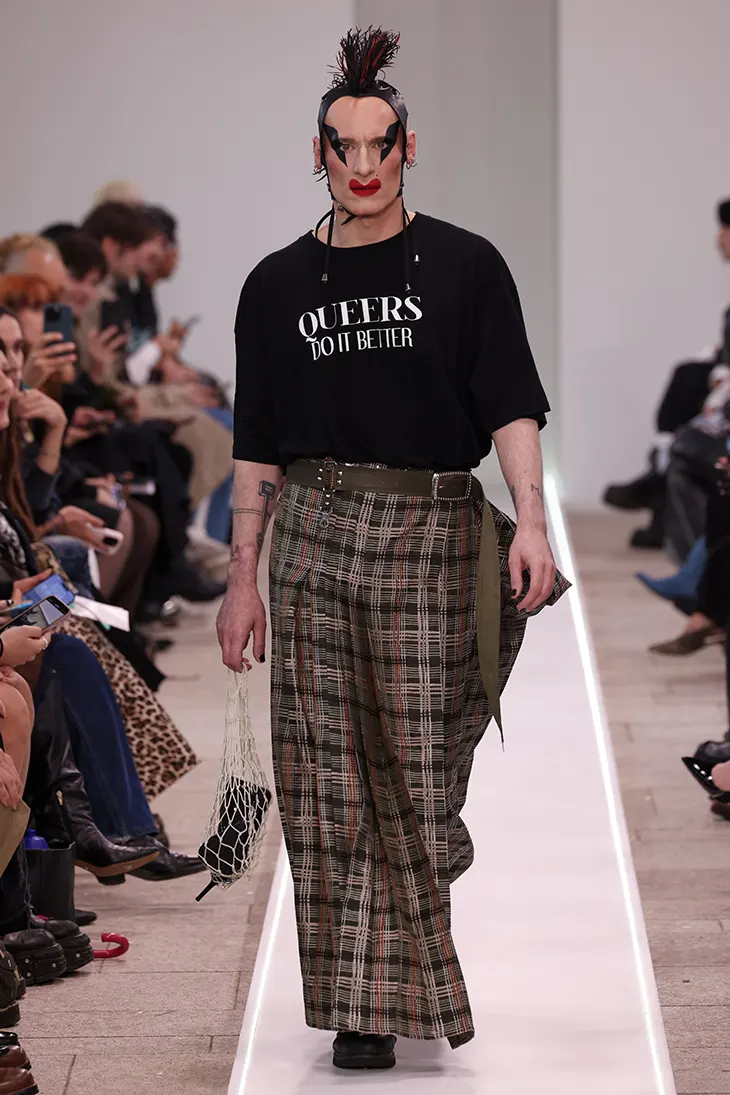
For the first time, you’ve incorporated leather, thanks to your partnership with Lineapelle. What does working with this material allow you to express that you couldn’t before?
It was for sure a challenge! Leather requires specific tools, knowledge, and rules that I had never dealt with before. The first couple of weeks were a complete fail and I had to scrap a few prototypes. Thankfully, I love being challenged when it comes to sewing, so after a while I found my way. I love adding steel hardware to my designs like rivets, buckles, eyelets and that’s so easy with leather!
Every garment is handcrafted from salvaged and archived materials. How important is sustainability and resourcefulness to your creative philosophy?
It’s literally fundamental. It’s 2025, if you’re an emerging brand and you don’t care about these issues, what are you even doing? More so when it comes to leather or fibers that consume tons of resources. As a fashion design teacher I’m really glad to see how the new generation of future designers feels that sustainability is the literal base to start from when it comes to starting a brand.
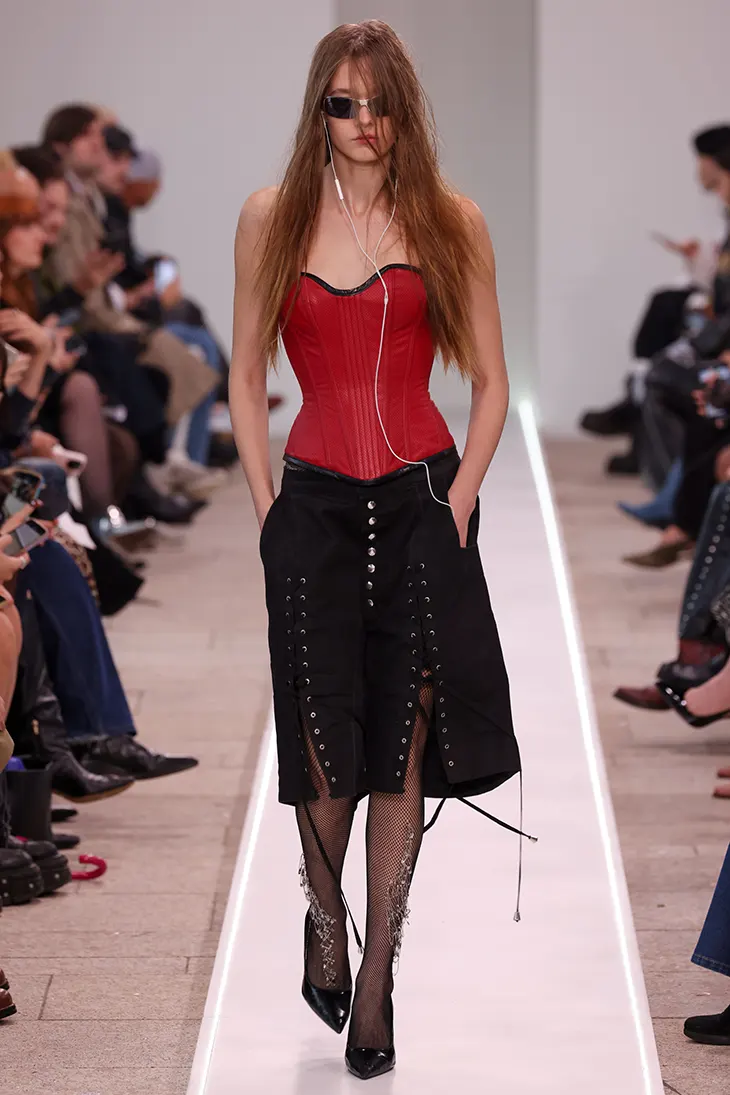
Showing during the Milan Fashion Week and as part of the Lineapelle Designers Edition is a milestone. What does this platform mean to you, and how do you see its role in supporting independent, queer voices in Italian fashion?
It’s so great to see platforms like Lineapelle or Camera Moda Fashion Trust really putting all this effort into supporting us. They really created a beautiful, supportive environment for us to thrive, succeed, and work at ease. I would’ve never reached the milestones I’ve conquered in the last couple of years if it wasn’t for them, and I will never stop being grateful for the way they listened to me and believed in me way before I started believing in myself.
“What I think is mandatory is to keep being vocal, be present, manifest, riot when needed, challenge stereotypes, face our fears of rejection, and keep being our most sincere selves.”
The collection is a love letter to nightlife, but also a meditation on what comes after. How do you envision a queer adult life that can shine in daylight, and do you see space for that in Italy’s current cultural landscape?
When I talk about “queer adulthood in daylight” I don’t mean that we have to stop living during the night. It’s not about that. It’s about fighting to feel comfortable also outside of our safe spaces. We fought so hard to create these safe spaces, now it’s time to feel safe everywhere and all the time. It’s for sure going to be difficult in the political climate we’re in now, but we will never stop raising our voices or stop existing. Also, we really need to remember that there won’t be “no pride for some of us without liberation for all of us” like Marsha P. Johnson famously used to say. We can’t advocate and fight for some causes and ignore others, especially when they’re worldwide issues like the Palestinian genocide. Free Palestine, always.
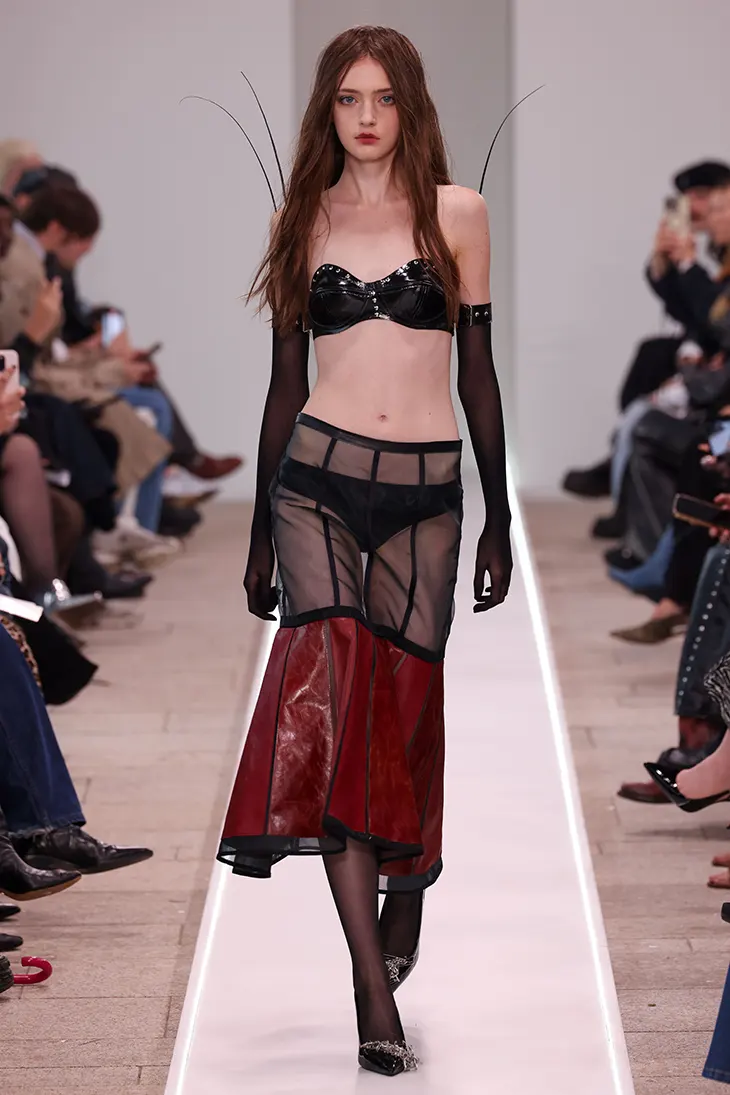
The fashion industry is at a crossroads regarding inclusivity and representation. What steps do you think need to be taken for queer culture to be more fully accepted and included? How can your work contribute to this shift?
I aim for a world in which you don’t have to put effort into being accepted and included for the way you are or the way you behave if you’re not causing harm to anyone. That, unfortunately, is not the case, so what I think is mandatory is to keep being vocal, be present, manifest, riot when needed, challenge stereotypes, face our fears of rejection, and keep being our most sincere selves. Like we always did.
